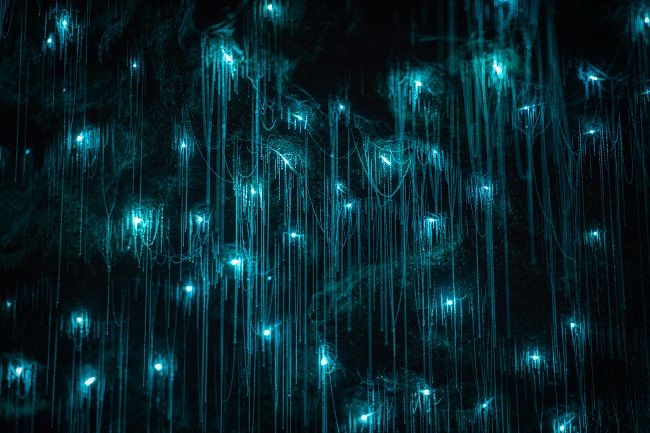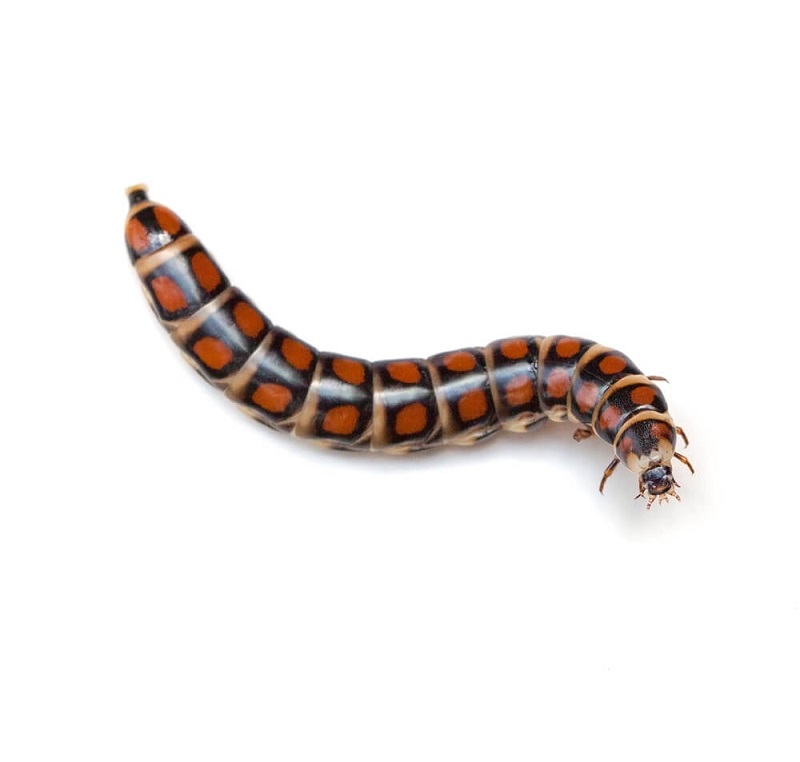
| Kingdom | Animalia |
| Phylum | Arthropoda |
| Class | Several Different Classes |
| Order | Several Different Orders |
| Family | Several Different Families |
| Genus | Many Different Genera |
| Species | Many Different Species |
| Niche | Variable, often a Detritivore or Fungus Feeding, some predatory |
| Length | Variable |
| Weight | Variable |
| Lifespan | Unknown |
| Social Structure | Variable |
| Conservation Status | Many species widespread, some rarer |
| Preferred Habitat | Varies by Species, often found in Caves |
| Average Number of Eggs | Varies by Species |
| Main Prey Species | Typically Fungi, Detritus |
| Predators | Other Insects, Mostly Unknown |
The Basics
Glow-worms are a fascinating type of animal! In fact, “glow-worm” is a common name for many different species of insects that glow using bioluminescence. Glow-worms include species from 4 different beetle families and several genera of Fungus Gnats.
Most commonly, when people say glow-worm they are referring to one genus of Fungus Gnat (Arachnocampa) that emits a blue/green glow in the larval form. These insects are amazing because they suspend sticky strings of slime all-around their nest. Using bioluminescent molecules in their body, they emit light from their abdomen – meant to attract insects! (Hence the genus name “arachno” – meaning spider.)
In the dark caves where these insects live, even these small points of light can attract many insects. As the insects fly into the tangled mess of sticky fly-traps, they inevitably get tangled up. The larval glow-worm simply reels each captured insect to its mouth, and dinner is served! The larvae of this species develop into large flying insects.

Why Do Glow-worms Glow?
While these are the coolest and most referenced glow-worms, there are also many other species of insects that emit a glowing light when they are in their larval form. However, unlike the Arachnocampa worms, not all glow-worms eat other insects. Many Fungus Gnat species actually feed on fungus (as their name implies). Other “glow-worms” are actually just the larval form of different beetles.
Each species of glow-worm may have evolved a completely different reason for their bioluminescence and may not be closely related at all. Some, like the Arachnocampa, use their bioluminescence to attract and capture insects. Other species may be attracting mates, warning off predators, or attracting other insects to help spread the fungus they eat.
Interesting Insights from the Glow-worm!
Glow-worms are fascinating creatures, made possible by the biological concepts that drive their existence. Glow-worms are the perfect jumping-off point to explore some very important biological processes!
Bioluminescence
Bioluminescence is caused by biological molecules that absorb energy and release excess energy as light. Certain biological molecules have a structure that has the ability to absorb energy from various sources. In the case of many insects, this molecule is a protein that is activated by ATP.

When ATP transfers energy to these molecules, they slowly release the energy at a specific wavelength. The wavelength emitted is determined by the structure of the molecule. Therefore, each type of glow-worm emits a slightly different color depending on the bioluminescent molecules it produces.
In nature, bioluminescence is seen in many different species – from fungi to fish. There are many different reasons for bioluminescence, but they typically are related to attracting prey, repelling predators, or finding mates in very dark places.
Predatory Worms and Larvae
The idea of a predatory worm probably makes some people’s skin crawl, but it is actually a very common phenomenon in nature. When most people think of a “worm” they picture a common garden Earth-worm. Completely harmless, if not uncomfortably slimy.
But in nature, if there is a niche available it is commonly filled by the most abundant species. True worms – those found in the Phylum Annelida – include the earthworm. But, this phylum also contains a number of large, predatory worms with terrible-looking jaws used to capture and devour prey.

The Fungus Gnat glow-worms that are active predators are actually much rarer because they are using a sticky string to hunt. In the insect world, few creatures other than spiders have evolved tools for catching flying insects from a stationary position. That being said, many larvae have found niches as predators. Dragonfly larvae actively hunt aquatic insects and even small fish. Antlion larvae build traps in the sand to catch ants and other small insects.
Common Names Vs Scientific Names
The name “glow-worm” is simply a common name. In different places, it refers to completely different species. If you are in New Zealand and someone says glow-worm, you have to assume that they mean a member of the Arachnocampa genus. If you are in the United States, they might be referring to any number of glowing beetle larvae.
The reason scientists developed scientific names for animals is to avoid this catastrophe as we begin to research and develop a more complex understanding of life on Earth. Common names simply don’t suffice to cover the massive amount of variety in our world. The term “glow-worm” refers to hundreds of different species of insects that glow and does not have a static meaning across the globe.
That’s why it is important that scientists use scientific names!
